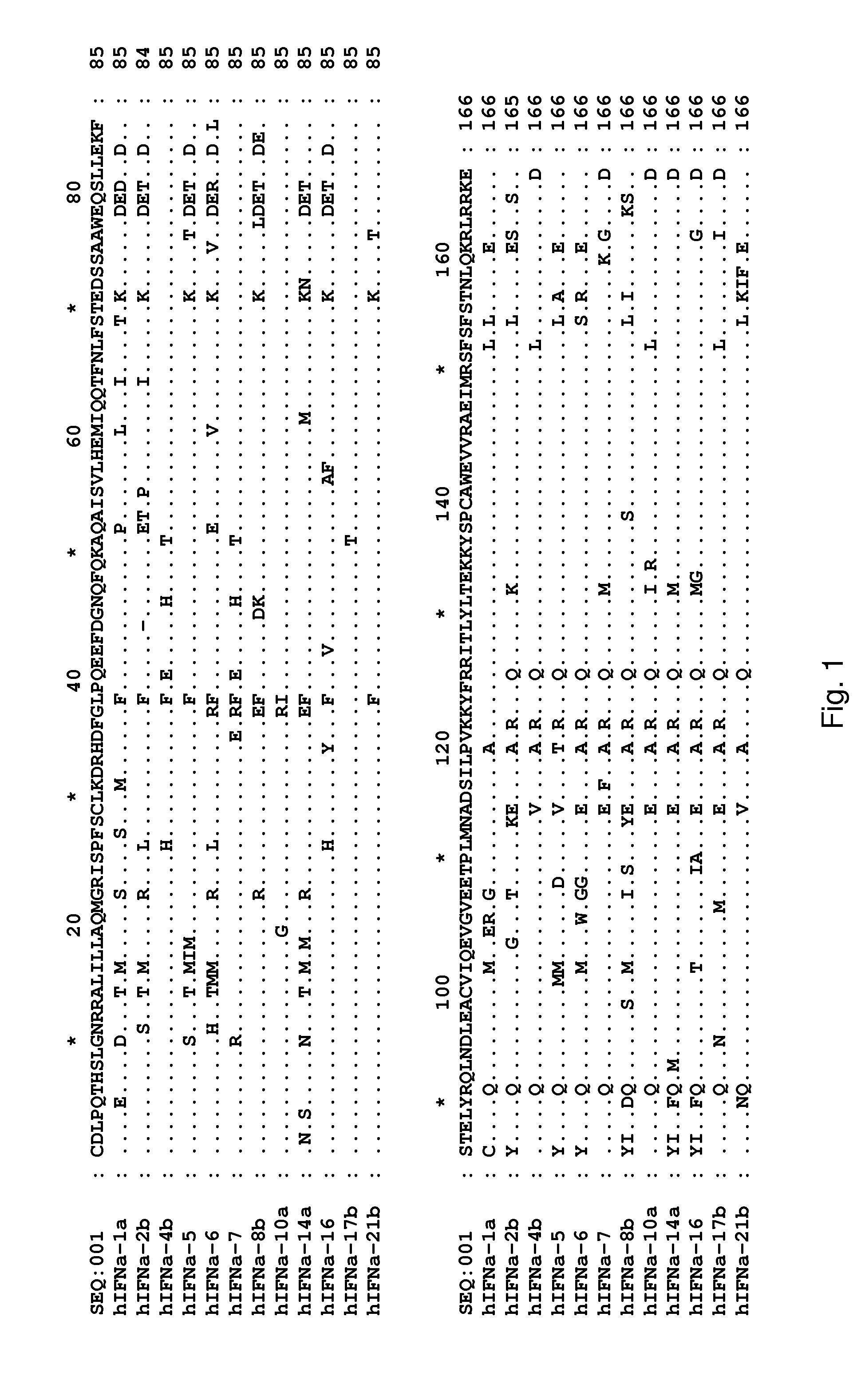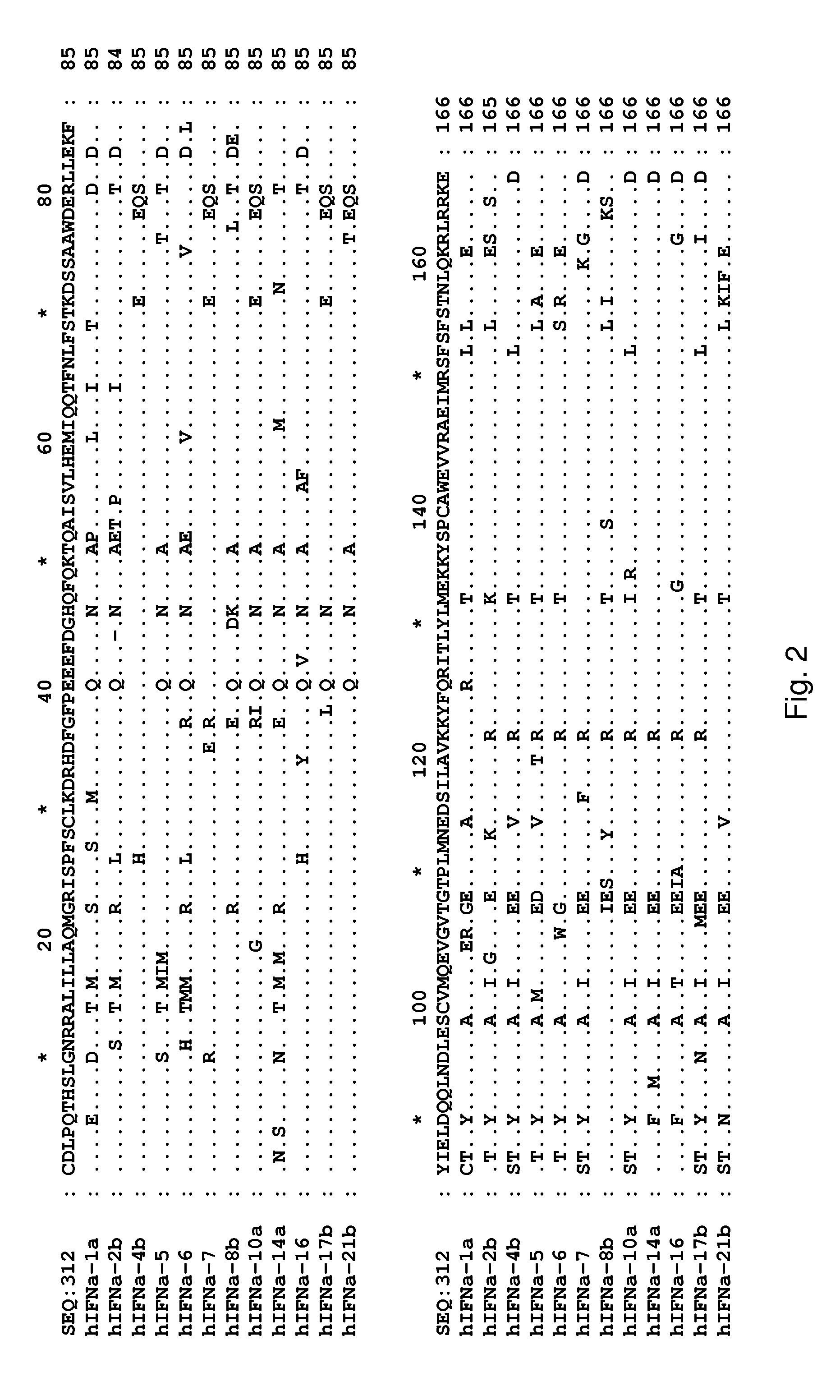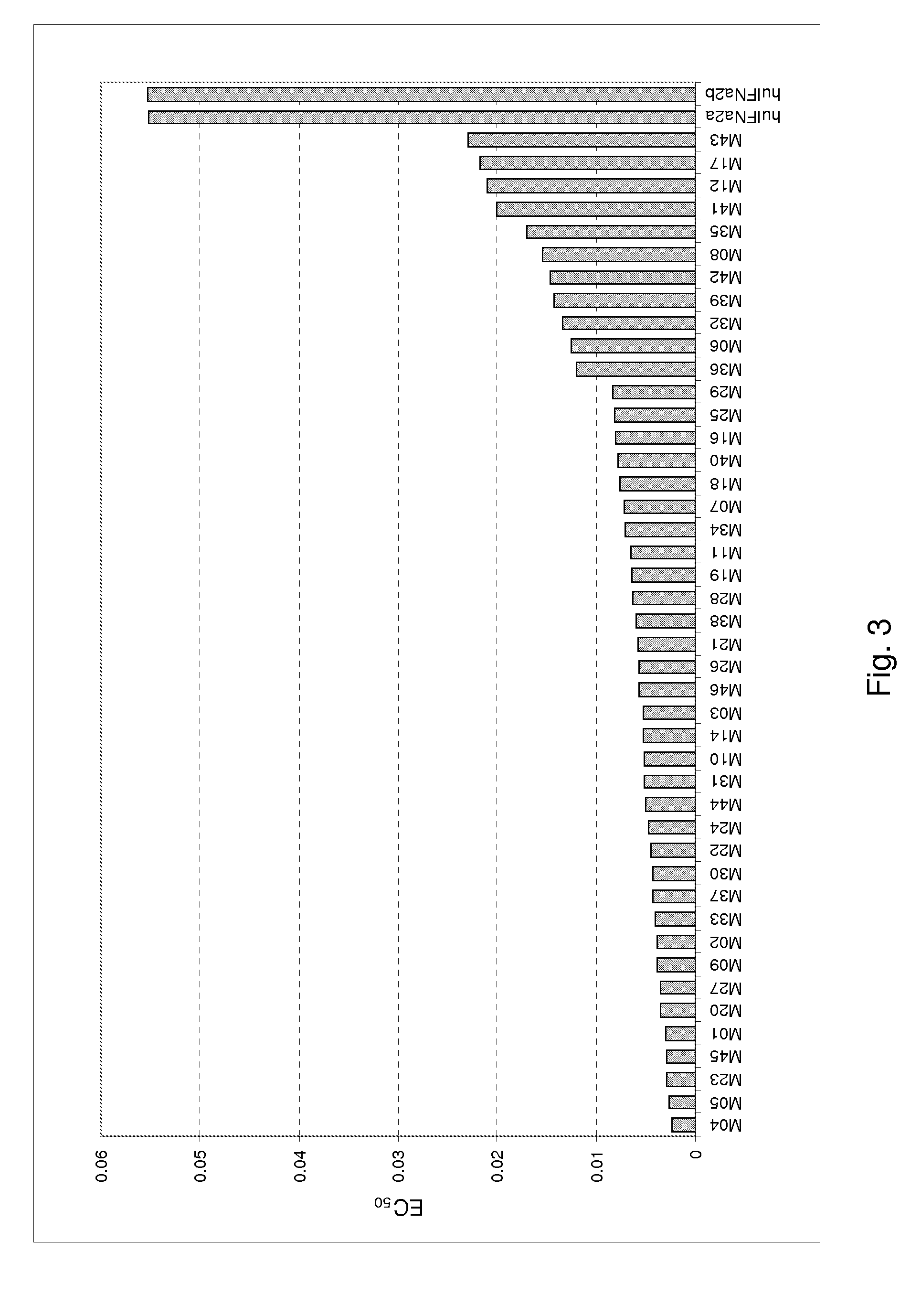Evolved interferon-alpha polypeptides
a polypeptide and interferon technology, applied in the field of polypeptides, can solve the problems of short serum half-lives, high rate of chronic infection, and inability to optimize for use as pharmaceuticals, and achieve the effect of reducing the number of copies of a virus
- Summary
- Abstract
- Description
- Claims
- Application Information
AI Technical Summary
Benefits of technology
Problems solved by technology
Method used
Image
Examples
example 1
Determination of Surface-Accessible Residues of Interferon-Alphas
Surface Exposure of Human Interferon-α2α Residues:
[0453]Based on the 24 NMR structures of human interferon-alpha 2a reported by Klaus et al., J. Mol. Biol., 274: 661-675 (1997), the fractional ASA of side chains was calculated. The sequence numbering used below is based on the mature sequence of the human interferon-alpha 2a protein (identified herein as SEQ ID NO:322). It is noted that this structure contains two disulphide bridges involving Cys1-Cys98 and Cys29-Cys138, respectively. By computing the ASA and the fractional ASA and taking the average of the 24 structures, focusing on the ASA of the side chains, it was determined that the following residues have more than 25% fractional ASA: D2, L3, P4, Q5, T6, H7, S8, L9, G10, R12, R13, M16, A19, Q20, R22, K23, I24, S25, L26, F27, S28, L30, K31, R33, H34, D35, G37, Q40, E41, E42, G44, N45, Q46, Q48, K49, A50, E51, E58, Q61, Q62, N65, S68, T69, K70, D71, S73, A74, D77, ...
example 2
Antiviral Activities of Interferon-Alpha Polypeptides
[0458]A major technical challenge with HCV is that the virus cannot be grown in vitro and has only recently been cultured in tractable animal models. There are, however, viruses that replicate in vitro which are considered to be useful surrogates for HCV viral replication. In vitro surrogate assays believed to be predictive of in vivo HCV antiviral activity include the assays described in the Materials and Methods section above, which measure the ability of test molecules to protect cells from the cytopathic effect (CPE) of viral infection, using Encephalomyocarditis virus (EMCV) in the human cervical carcinoma-derived HeLa cell line.
[0459]FIG. 3 shows antiviral activity in a HeLa / EMCV assay, expressed as EC50 (ng / ml), for the following exemplary polypeptides of the invention: M04 (SEQ ID NO:262); M05 (SEQ ID NO:266); M23 (SEQ ID NO:232); M45 (SEQ ID NO:88); M01 (SEQ ID NO:312); M20 (SEQ ID NO:297); M27 (SEQ ID NO:167); M09 (SEQ I...
example 3
Pegylation of Interferon-Alpha Polypeptides
[0460]The following provides exemplary procedures for preparing conjugates of the invention.
Cys-PEGylation
[0461]A polypeptide of the invention which contains a free cysteine may be cysteine-PEGylated as follows. The polypeptide is first partially reduced with an equimolar concentration of TCEP (Triscarboxyethylphosphine) at 4° C. for 30 min in 50 mM MES, 100 mM NaCl, pH 6.0. The reduced polypeptide is then reacted with a 4 fold molar excess of mPEG-MAL reagent (with a PEG moiety such as a 20 kDa or 30 kDa linear mPEG, or a 40 kDa branched mPEG2) for 1 h at 4° C. under the same conditions. The PEGylated reaction mixture is loaded on to a SP-Sepharose HP column equilibrated with 50 mM MES, pH 6.0, 100 mM NaCl. After a 10 CV (column volume) wash step a gradient from 0-600 mM NaCl is applied to fractionate the PEGylated and unPEGylated fractions. Fractions are collected and aliquots are analyzed by SDS-PAGE. Fractions containing monoPEGylated s...
PUM
| Property | Measurement | Unit |
|---|---|---|
| molecular weight | aaaaa | aaaaa |
| molecular weight | aaaaa | aaaaa |
| molecular weight | aaaaa | aaaaa |
Abstract
Description
Claims
Application Information
 Login to View More
Login to View More - R&D
- Intellectual Property
- Life Sciences
- Materials
- Tech Scout
- Unparalleled Data Quality
- Higher Quality Content
- 60% Fewer Hallucinations
Browse by: Latest US Patents, China's latest patents, Technical Efficacy Thesaurus, Application Domain, Technology Topic, Popular Technical Reports.
© 2025 PatSnap. All rights reserved.Legal|Privacy policy|Modern Slavery Act Transparency Statement|Sitemap|About US| Contact US: help@patsnap.com



